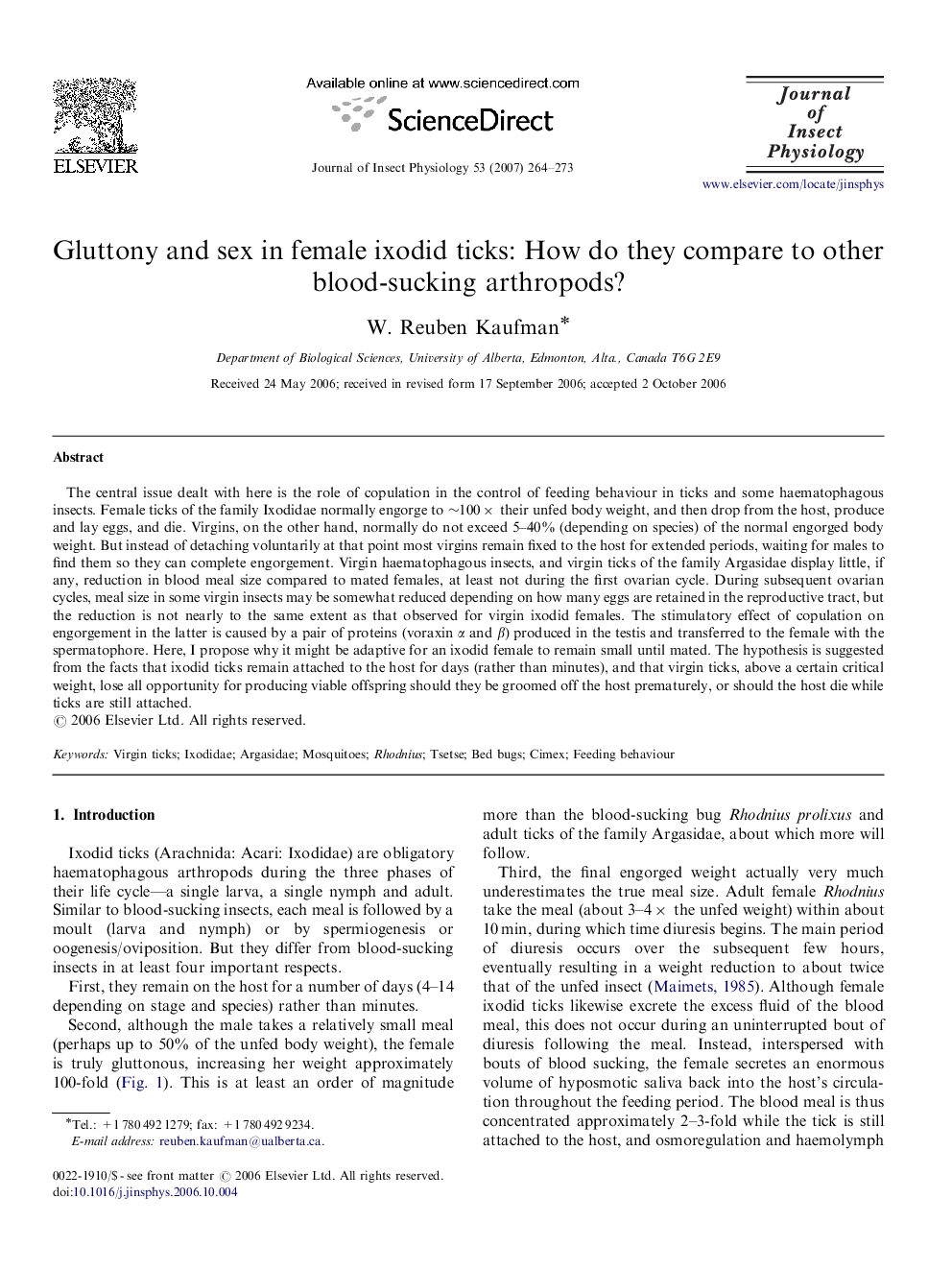| Article ID | Journal | Published Year | Pages | File Type |
|---|---|---|---|---|
| 2841680 | Journal of Insect Physiology | 2007 | 10 Pages |
The central issue dealt with here is the role of copulation in the control of feeding behaviour in ticks and some haematophagous insects. Female ticks of the family Ixodidae normally engorge to ∼100× their unfed body weight, and then drop from the host, produce and lay eggs, and die. Virgins, on the other hand, normally do not exceed 5–40% (depending on species) of the normal engorged body weight. But instead of detaching voluntarily at that point most virgins remain fixed to the host for extended periods, waiting for males to find them so they can complete engorgement. Virgin haematophagous insects, and virgin ticks of the family Argasidae display little, if any, reduction in blood meal size compared to mated females, at least not during the first ovarian cycle. During subsequent ovarian cycles, meal size in some virgin insects may be somewhat reduced depending on how many eggs are retained in the reproductive tract, but the reduction is not nearly to the same extent as that observed for virgin ixodid females. The stimulatory effect of copulation on engorgement in the latter is caused by a pair of proteins (voraxin α and β) produced in the testis and transferred to the female with the spermatophore. Here, I propose why it might be adaptive for an ixodid female to remain small until mated. The hypothesis is suggested from the facts that ixodid ticks remain attached to the host for days (rather than minutes), and that virgin ticks, above a certain critical weight, lose all opportunity for producing viable offspring should they be groomed off the host prematurely, or should the host die while ticks are still attached.
